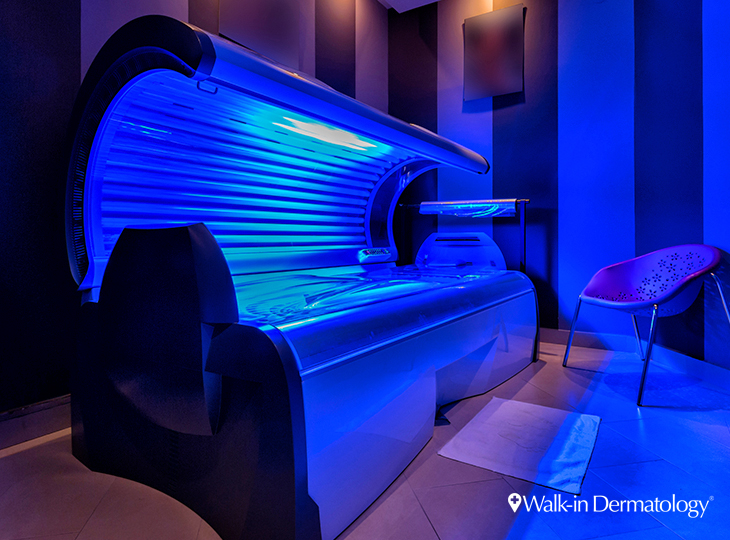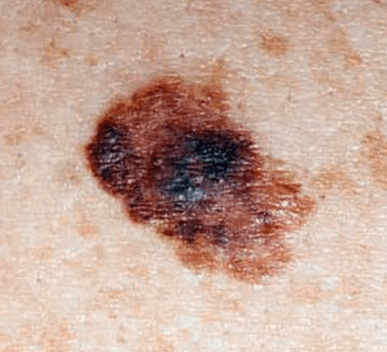Tues: 8:30am - 3:00pm
Wed: 12:00pm - 6:00pm
Thurs: 8:30am - 3:00pm
Fri: Closed
Sat: 8:30am - 12:30pm
Sun: Closed
Greenvale, NY 11548
Is Indoor Tanning Safe?


There’s a lot of misinformation in circulation that tanning booths are somehow safer than sunbathing in the backyard or on the beach. Truth is, they’re not.
Those who believe that direct sunlight is somehow more harmful than regular sessions on a tanning bed may actually be putting themselves at greater risk of skin cancer because they’ve been lulled into a false sense of security.


In fact, tanning salons generate ultraviolet radiation just like the sun. These UV rays are what cause your skin pigment to darken into a tan. With overexposure UV rays can also cause melanoma, which is the most serious type of skin cancer.
Tanning salon operators may give you a sales pitch that they can give you tanned skin under a “controlled environment.” That is true only to the extent that the tanning salon uses lamps indoors, unlike bathing in direct sunlight. But that’s the only real difference. The UV rays – and their potential impact – are the same. UV rays are dangerous no matter the source. The exposure from a tanning bed is also steady, unlike outdoor sunbathing, where UV exposure can vary based on environmental factors such as clouds moving across the sky.
The relationship between indoor tanning and melanoma has been investigated in several control studies, the most recent of which found that users of indoor tanning devices had a 16% to 20% higher risk of developing melanoma than non-users, according to a research paper published in the American Journal of Epidemiology.
The International Agency for Research on Cancer more than 13 years ago classified UV radiation from indoor tanning as carcinogenic to humans. Despite this, indoor tanning remains popular, especially among younger women. The risk was found to be greater among women who started indoor tanning younger than 30.
Melanoma on the legs was most common among test subjects, followed by the torso, arms, head and neck.
As few as 30 tanning sessions were shown to increase the risk of melanoma by 32%, while 480 or more indoor tanning sessions (about once a week for 10 years) raised the risk to 53%.
In the United States, melanoma rates are rising more rapidly among women than men younger than 50, according to the National Center for Biotechnology Information.
Indoor tanning is believed to be a factor for the higher increase in melanoma rates in the United States among women compared with men, as women were seen to begin using tanning salons typically at a much younger age and for longer periods of time. There is even growing evidence to show that tanning can be addictive. About 20% of 18- to 30-year-old white women who use indoor tanning show signs of addiction, according to the American Academy of Dermatology. They report finding it hard to stop tanning and when they don’t they feel fidgety or depressed.
The research shows positively that tanning beds are not safer than the sun. There’s just no such thing as a “safe” tanning bed, tanning booth, or sun lamp. Even one indoor tanning session can increase the risk of developing skin cancer (melanoma by 20%, squamous cell carcinoma by 67%, and basal cell carcinoma by 29%), according to the American Academy of Dermatology. If the risk of skin cancer is not enough of a deterrent, consider that emergency rooms across the country routinely treat people for burns, loss of consciousness and eye injuries as a direct result of indoor tanning – and all forms of tanning cause the skin to dry out, wrinkle and age more rapidly.
Let Walk-in Dermatology Take Care of You and Your Skin
If you have concerns about any skin condition and need dependable answers fast, you don’t have to wonder, worry or wait. Walk-in Dermatology is here to keep you healthy. Our team of dermatologists and experienced healthcare staff will address your concerns and provide the necessary care for all your skin conditions. We can set up a Video Visit and even prescribe medications remotely, or you can schedule an appointment with us online. The choice is yours. But don’t wait until the problem gets worse. Contact us today at (516) 621-1982.








